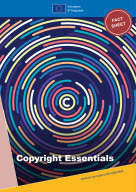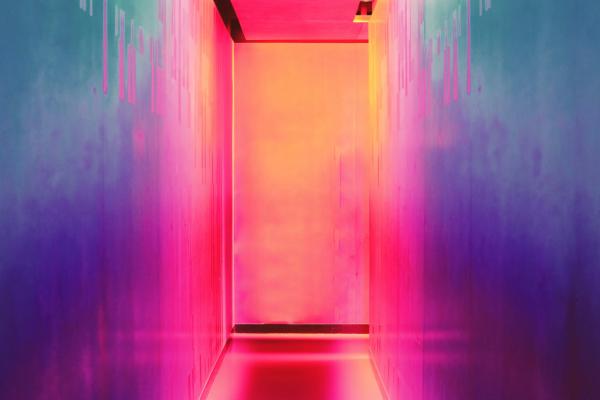
In a world rapidly moving towards digitalisation, digital art has emerged as a vibrant and captivating form of creative expression. In this article, we explore its relationship to intellectual property rights, a fertile ground for creativity and legal protection.
What do we mean by digital art?
The world of digital art is a vast space of creativity where technology and imagination combine. From digital animation to 3D modelling, this world offers limitless possibilities, with each pixel representing a unique stroke of innovation and creativity.
One of the defining characteristics of digital art is its reliance on technology as an integral part of the creative process. Unlike traditional art forms that use physical materials, digital artists use software, computers and digital devices to bring their visions to life. Pixel art, for example, uses this technique to create intricate designs by arranging individual pixels to form images reminiscent of retro video games. Another example is digital painting, where artwork is created using drawing tablets and software, mimicking traditional painting techniques but with the convenience of digital media. This technological aspect not only allows for greater flexibility and experimentation but also opens up new ways of artistic expression.
For all works of art, there exist issues related to intellectual property protection and fakes or copies made by third parties without the consent of the author of the work of art. As is the case in many other aspects, these issues are made even bigger when going into the digital world.
But what happens when digital art meets the technological revolution of crypto-art? That's where the story gets even more fascinating. While digital art involves all art created using digital technology, crypto art specifically uses blockchain technology for ownership and authentication. Digital art exists purely in the digital realm, while crypto art is associated with non-fungible tokens (NFTs) that verify authenticity and scarcity. Crypto art pieces cannot be reproduced without the original file, making them truly scarce and transparently recorded on the blockchain. However, this innovation also addresses a long-standing challenge in the art world, where reproductions and copies often diminish the value of original works.
In this article we will look at IP protection applicable to digital art. First, we will se how the traditional methods used to protect artistic creations still apply to in this context, such as the established frameworks for copyright and legal protection measures. Second, we will identify the unique challenges that artists face in protecting IP for digital art, and some tools that digital artists can use to protect their own work, including digital rights management technologies, watermarking and blockchain technology.
How is it protected?
Copyright law
Copyright is the cornerstone of all works of art in the European Union and around the world. As our readers most probably already know, when an author creates an original work, whether it's a poem, a musical composition or an illustration, he or she automatically acquires copyright in that creation. In the EU, this protection lasts for up to 70 years after the death of the author or, in the case of artistic collaborations, of the last surviving author.
Digital art is no different: these works of art are protect via copyright protection, which grants authors a number of exclusive rights that are essential to protect their work in the digital environment. On the one hand, economic rights ensure control over the work and compensation for its use through the sale, licensing or distribution of the work on digital platforms. For example, a graphic designer can sell licences to use her illustration on websites or mobile applications. On the other hand, moral rights protect the author's right to be recognised as the creator of the work and to oppose any unauthorised modification that may affect its artistic integrity. This is particularly important in the case of digital works, which can be easily manipulated or altered without the author's consent.
Legal protection measures
Although copyright automatically protects a work from the moment it is created, there are additional steps that authors can take to strengthen their legal protection. Indeed, having a right by law is of little use if no steps are taken to make sure that it is respected by others! There therefore exist legal tools facilitating the enforcement and respect of copyright. While these measures do not grant any right as such (since copyright is automatic) they are useful to assert one’s rights over a work of art and can be crucial in case enforcement actions are necessary.
- Official notification of authorship
Authors can choose to officially attribute their authorship of the work by including a copyright notice, such as the © symbol, along with the year the work was created.
- Registration of works
Although there is no unified European copyright registration, some national intellectual property offices offer copyright registration services. In case of a legal dispute, a registration of the work can be very useful to demonstrate a legal presumption of ownership over the work, authorship and the creation date of the work.
In some cases, national IP offices, such as the Spanish Patent and Trademark Office (OMPE) and the United States Patent and Trademark Office (US Copyright Office; remember that in the US, copyright registration is mandatory to take enforcement measures!), maintain an official copyright register. In addition, it should be noted that there are also alternatives, such as the i-Depot repository operated by the Benelux IP Office and the e-Soleau mechanism of the French IP Office. Their primary purpose is to establish a creation date, not to grant exclusive rights, but although they are not strictly "copyright registries", individuals around the world can register their ideas or creations to establish proof of creation at a specific date, thereby facilitating the establishment of a presumption of ownership.
- Terms of Use and Licensing Agreements:
Use license agreements to clearly define the terms and conditions under which third parties may use the work. These contracts may include provisions on the duration of the license, the permitted rights of use and the terms of remuneration. In addition, there are specialised online platforms for the distribution and licensing of digital works that provide tools to protect copyrights and manage usage license transactions.
When artists put their work online, they often have a wide freedom of choice regarding the terms of use. These options can range from hyper-restrictive terms, where no one can use or copy the work without explicit permission, to more open approaches such as the Free Art License or Creative Common Licenses, where the work is available for use, and sometimes modification and redistribution under certain conditions and for certain purposes (the exact details of the freedom given will depend on the specific terms of any given licenses).
Copyright in software
In the context of digital art, software becomes the artist's canvas and tools, essential to capturing creativity in digital form. Elements such as the graphical interface, user manual, software title and specifications, all of which are inherent to the artistic creation process, are protected by copyright. This protection extends to the program itself, covering everything from the source code to the final product, as well as preliminary design materials such as functional analyses and sketches. Therefore, when using software to create art, it's important to recognise that the code itself may be protected independently of the artwork itself.
However, certain key elements, such as algorithms, programming languages and software functionalities, are considered to be ideas rather than concrete artistic expressions and are therefore not subject to copyright protection. In case they are integral to the way in which the artist generates his or her art, they should be protected via other mechanisms, especially confidentiality.
Difficulties in IP protection of digital art
Because of technological advances and the growing popularity of digital art, intellectual property protection in this creative field faces important challenges.
One of the main difficulties relates to the automatic nature of copyright and the lack of registration requirements. While automatic copyright protection encourages creativity, the lack of registration can lead to uncertainty about authorship and ownership of digital works. Determining when a work was created, who its true author is and who owns the rights can be problematic, and relevant information about the provenance and authenticity of works is often difficult to find online. This can mostly be solved using the legal tools described above.
In addition to this legal challenge, digital artists also face two main technical and practical. First, because of the quasi-global reach of the Internet, it is very difficult for them to track and prevent unauthorised use of their work on digital platforms, which can be costly and complicated. Secondly, pursuing large-scale infringement can also be costly. As a digital work reaches a wider audience on the Internet, the risk of plagiarism increases.
Methods which help solve these difficulties
There are several ways to deal with the challenges of protecting the intellectual property of digital art.
One option is to use digital rights management (DRM) practices , which involve technologies and methods to control access to digital content and limit its use. It aims to enforce copyright protection by managing the distribution, viewing, copying, and modification of digital files, such as music and movies. DRM systems use encryption and access controls to prevent unauthorised sharing and piracy, but they also raise concerns about user rights and privacy.
Another strategy is the use of digital watermarks, which act as signatures on digital works which can be visible or invisible, providing an effective mechanism for identifying authorship and discouraging unauthorised use. These marks reinforce the authenticity and ownership of the work, providing an additional layer of protection for artists. Simply put, adding an encrypted watermark which third parties cannot readily remove from the digital artwork as they copy it ensures that they are not able to claim any ownership or authorship rights over these works effectively without the artist or owner’s consent.
Encryption is a basic mechanism for protecting data integrity by rendering information indecipherable without the appropriate decryption key. This security measure ensures that only authorised individuals with the proper credentials can access and manipulate the content, protecting it from unauthorised access or copying and potential tampering. By using encryption techniques, artists can protect their creations from digital threats and maintain control over who can access their work.
Last but not least, blockchain technology has emerged as an innovative solution for digital art, giving rise to so-called "crypto-art", and has been the subject of heated discussions and debates, as well as high and highly publicised investments. By linking digital artworks to the blockchain, the ownership and transaction details of the art are securely recorded in a decentralised and immutable ledger. This process assigns a unique digital token or certificate to each work of art, verifying its authenticity and ownership. In short, by using blockchain technology, artists can ensure the transparency, traceability and protection of their digital creations, protecting them from unauthorised duplication and establishing a clear record of ownership and origin for collectors and art lovers.
By combining these tools and approaches, digital artists can significantly strengthen the protection of their work and mitigate the risks associated with intellectual property in the digital world.
Picture by insspirito on Pixabay
Details
- Publication date
- 29 February 2024
- Author
- European Innovation Council and SMEs Executive Agency


